The Five C's of Survival
A guide to the five most important resources for wilderness survival
Combustion
Fire is one of the Four Key Components of Survival, so adding a Combustion device to your survival kit is a no-brainer. Fire has a wide array of uses in the wilderness. It can be used to cook food, sterilize drinking water, provide warmth, dry out wet clothes and gear, ward off predators and dangerous animals, keep insects away, signal for rescue, provide light, make tools, sterilize metal utensils, and even improve your attitude.
Soap can be made from the ash of a fire, and the smoke itself is antibacterial and can "clean" your clothes and body and eliminate body odor. When your clothes collect a smoky smell, it will help deter insects even when you are far away from the actual fire. You need to be able to make fire when surviving or camping in the wilderness, and that is what Combustion is all about.
There are several different types of Combustion devices available today, and they each have their pros and cons. One of the easiest ways to start a fire is with a lighter or matches, but these are not necessarily the most reliable or durable. They can easily break or stop working when wet. Lighters can quickly run out of fluid and most of them don't even work at high elevations. However, they still make great additions to a survival kit. There are several expensive “survival” lighters on the market, but these tend to have mixed results. In my opinion, just a plain old classic BIC lighter is the way to go. I have never had one stop working before it ran out of fluid.
This electric "survival" lighter is highly rated, but personally I tend to just stick with a classic BIC butane lighter

As far as matches are concerned, avoid the cheap match book style. I like stormproof matches, they're heavy-duty and work when wet. Once lit, they can even burn underwater! However, stormproof matches generally are not “strike anywhere”. Wooden strike anywhere matches are another good option. Keep your matches in a small watertight container, and wrap them with a rubber band if necessary so they don't rub together during movement, which can degrade and possibly even ignite them! Matches are usually great for starting fires, however they come in limited supply and you will quickly burn through them if that is your only firestarting method.
Stormproof matches are one of the easiest ways to start a fire, but they have a very limited supply

A ferrocerium rod or “firesteel” is a popular choice among bushcrafters and is a good combination of effectiveness and reliability. They don't break easily, can be used many times, and even work when wet, but they only produce sparks and require good, dry tinder to ignite into flame. A high-quality ferro rod can throw sparks at a scorching hot temperature of 3,000 degrees Fahrenheit (1,650 Celsius), but you need something sharp to grind the firesteel with to get a good shower of sparks. Sometimes the back of your knife can be used if it has a square edge, but a rounded edge will not work. Many firesteels come with metal scrapers attached by a small cord for just this purpose. A high-quality firesteel is perhaps one of the best and most well-rounded Combustion devices available.
Ferrocerium firesteels are a favorite among bushcrafters, combining effectiveness with durability

A magnesium stick is basically just a firesteel with a block of magnesium attached. The magnesium is shaved into a small pile with a knife, scraper, or saw and then ignited with sparks from the attached firesteel. The magnesium burns extremely hot (over 5,000 F / 2,760 C) but only lasts a few seconds, so there must be good kindling set up ready to take the flame quickly. They are a great option if there is not much reliable tinder available in your area. Shaving the magnesium block can be time-consuming and tedious though. You have to be very careful with the pile of shavings or they can be blown away or accidentally scattered. It's often easier to just gather some seed fluff, dry grass, or other tinder from your environment if it's available. But if good tinder is not available, a block of magnesium can be that essential link between a spark and a flame.
Magnesium sticks are made of the basic chemical element Mg, and provide flammable tinder even in the wettest conditions

A fire piston is an eccentric choice. A fire piston, also called a “fire pump”, works by compressing air so fast that it gets super hot, igniting a small piece of tinder inside. The temperatures can reach over 400 F / 205 C, which is the autoignition point of tinder. If you use a clear fire piston you can actually see it light up inside!
Fire pistons can be very easy or very difficult to start a fire with. If you have very good, dry tinder or charclothe, the first press might ignite easily. However, if your tinder is questionable, or your piston doesn't slide smoothly, or there is some malfunction such as a small leak, your arm might start hurting from trying so many times. They also rely on lubricated O-rings to properly seal and slide the pump, which can be finicky. However, the main strength of a fire piston is that it can be used virtually infinite times, unlike other Combustion devices which are eventually consumed. Fire pistons are definitely not the most reliable Combustion device, but are a fun tool and a perfectly viable option in some situations.
A fire piston's main strength is that it can be used virtually endless times without consuming itself

When it comes to friction fire, there are quite a few different techniques, such as bowdrill, hand drill, fire plow, and fire saw. In theory, friction fire is very simple, and usually just involves rubbing a softwood against a hardwood. The softwood grinds into a pile of dust which gets hotter and hotter until it eventually congeals and ignites into a small ember, which is then placed in a tinder bundle and carefully blown into flame. The wood rubbed together needs to be completely dry deadwood and the tinder should be very dry and with a lot of surface area. Friction fire requires a lot of practice to master and is generally one of the most difficult ways to start a fire. It also heavily depends on the type environment; in arid places such as deserts it is far easier to succeed at friction fire than in wet environments like jungles. However, it's good to practice friction fire when you can and in some environments it is a reliable option.
There are several other, less common ways to make fire, such as using a magnifying glass or parabolic lens. Magnifying glasses and parabolic lenses both work on the principal of focusing sunlight into one intense point. Everyone has heard about children using Grandma's magnifying glass to melt plastic toy soldiers. This same heat can be used to ignite tinder. The smaller and more focused the spot of sunlight is, the hotter it will be. It may take some time and maneuvering of the lens to find that perfect angle.
Magnifying glasses can sometimes be improvised from everyday items. A lens removed from a camera, eyeglasses, and even clear bottles can sometimes focus light in that perfect way to get hot enough to ignite tinder. A clear plastic or glass bottle, or even a clear plastic bag, filled with clear water has been shown to work. It depends on what the shape of the bottle or bag is though. There are stories of fires being accidentally started because a trash pile had empty bottles in it, and on a clear, hot summer day the Sun hit it at the right angle and ignited some flammable trash!
A parabolic lens works on a similar principal as a magnifying glass, except the sunlight is reflected off of curved metal instead of passing through curved glass. A parabolic lens is not necessarily an item you would choose to stock in a survival kit, but in desperate times they can sometimes be improvised from things like lightbulb sockets, car headlamps, folded tin foil, and even the bottom of an aluminum soda can. Any inwardly curved reflective surface could have potential. The more clean and smooth the surface is, the better it will reflect sunlight. Polish the surface by using an oil and a piece of fabric to give yourself the best chances. This technique is definitely not something to be relied upon, but could be good to know in a desperate situation.
Magnifying glasses and parabolic lenses both require clear, direct sunlight and demand patience. On cloudy days, in heavily canopied forests, or at night it will not work. Their advantage though is that these items can be used virtually infinite times without consuming anything. These cheap credit card sized magnifying lenses are a great low-weight, low-volume item to just toss in your survival kit and forget about, because why not?
These credit-card sized magnifying lenses focus the Sun's rays into a small point hot enough to ignite tinder

A battery can also be used to start fire by attaching the positive and negative terminals with a metal wire, which should get hot enough to ignite tinder. This is a somewhat dangerous technique because batteries can explode if their terminals are connected in this manner for a long enough amount of time. A car battery can throw sparks if the connecting wire is just tapped on the terminal, which could ignite tinder. While batteries are possibly viable Combustion devices, they are not a good option for storing in your survival kit for this purpose.
Of course, most flairs can definitely be used to start a fire, but think twice before expending your rescue equipment for this.
While not necessarily reliable, some of these methods show that perfectly viable techniques are not always obvious, and that creativity, adaptability, and improvisation are really the keys to survival. There are probably even ways to start a fire that no one has even thought of yet!
It's good to practice various methods of firestarting, and include several different types of Combustion devices in your survival kit. Personally, I carry almost all of the above in my survival kit when backpacking or camping. I try to save what I don't need though. If the environment is dry and I have natural tinder available, I'll use a ferro rod and save my matches for a rainy day. If it's dry but there is no good tinder, I might use a magnesium stick. If it's been raining, I might have to bust out the stormproof matches, but only as a last resort.
Along with your Combustion devices, you may want to include some tinder in your survival kit. Tinder is often the most difficult piece of the firestarting puzzle, and some places will be very scarce of it. So, carrying some quality tinder with you is not a bad idea, especially since it's virtually weightless and takes up very little space. There are several options of ready-made tinder available on the market, but I find basic cottonballs work very well. I simply throw a few cottonballs in a little plastic baggie, squeeze out the air, and throw it in my pack. Break apart and fluff up the fibers for some Grade-A tinder. Also, if you are hiking and see some good tinder, go ahead and grab some and put it in your pocket, there may not be any available at your future campsite location.
Storebought "survival" tinder bundles are a safe compliment to any Combustion device, and are basically just compressed cotton fibers

One of the best tinders that exists is charclothe. Making it requires that you already have a fire going, so it's a bit of a catch-22, but it's a great way to prepare for future fire-making. In principal, creating it is very simple: Gather some flammable material, usually 100% cotton fabric is used which can be cut from a bandanna or t-shirt, but in theory almost anything flammable will work, such as plant fibers, so long as the material is cut or shaved into small enough pieces.
This material is placed into a heatable container, such as a metal canteen or an empty altoids type can. The container is sealed but not airtight, and placed in the fire. If using a metal canteen, a flat rock can be placed on top to "seal" it. Smoke will begin to escape via the small hole or crack, but air cannot enter. The material inside is burned but cannot combust completely because oxygen does not reach it. Once the smoking stops, the container is removed from the fire and allowed to cool. The result is tinder that is "carbonized", meaning it is almost pure carbon. This tinder is very similiar to charcoal and is highly flammable, with a low ignition point. Charclothe very readily takes even a weak spark, but it needs to be added to a tinder bundle and blown into flame.
Charclothe is very easy to make, provided you have the right materials. It is a great addition to any survival kit and one should at least know how to do it. Charclothe is messy, leaving black soot wherever it goes, so should be stored in a sealed container.
Click below to learn about each C of the Five C's of Survival:
• Cutting
• Combustion
• Cordage
• Container
• Cover
Leave A Comment
Add Comment
Wilderness
Survival Gear
Fixed Blade Bushcraft Knife
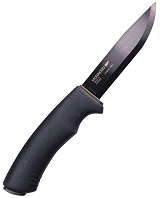
Ferrocerium
Rod Firesteel
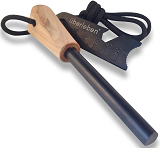
550 Paracord
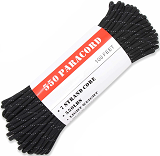
Stainless Steel Canteen
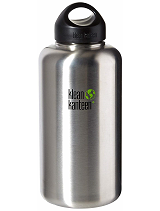
Waterproof
Tarp
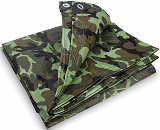
Multitool
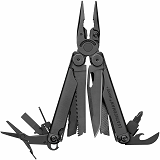
Stormproof Matches
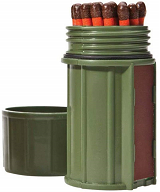
Folding
Hand Saw
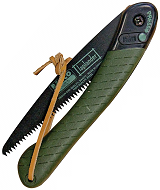
Stainless Steel
Pot
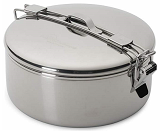
Waterproof
Rain Poncho
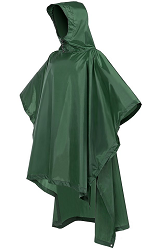
Water
Purification
Tablets
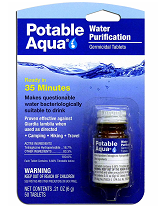
Kukri Machete
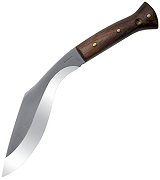
Magnifying
Lens Firestarter
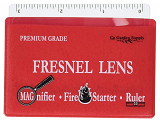
Duct Tape
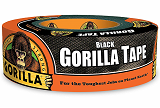
Compass
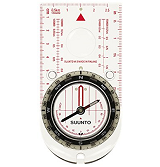
Water Filter
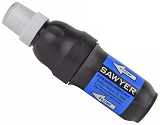
Magnesium
Stick Firestarter
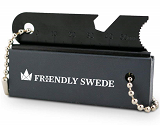
Blade
Sharpener
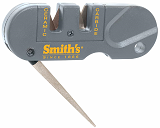
Firestarting
Tinder
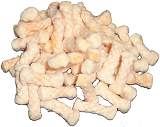
Fishing Kit
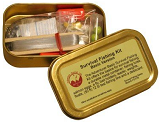

Survival Gear
Fixed Blade Bushcraft Knife

Ferrocerium
Rod Firesteel

550 Paracord

Stainless Steel Canteen

Waterproof
Tarp

Multitool

Stormproof Matches

Folding
Hand Saw

Stainless Steel
Pot

Waterproof
Rain Poncho

Water
Purification
Tablets

Kukri Machete

Magnifying
Lens Firestarter

Duct Tape

Compass

Water Filter

Magnesium
Stick Firestarter

Blade
Sharpener

Firestarting
Tinder

Fishing Kit


Comments (0)